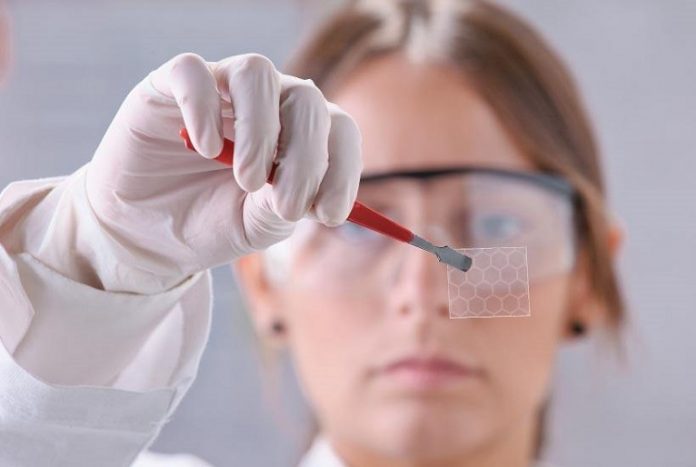X-ray scans revolutionized medical treatments by allowing us to see inside humans without surgery. Similarly, terahertz spectroscopy penetrates graphene films allowing scientists to make detailed maps of their electrical quality, without damaging or contaminating the material. The Graphene Flagship brought together researchers from academia and industry to develop and mature this analytical technique, and now a novel measurement tool for graphene characterization is ready.
Graphene is often ‘sandwiched’ between many different layers and materials to be used in electronic and photonic devices. This complicates the process of quality assessment. Terahertz spectroscopy makes things easier. It images the encapsulated materials and reveals the quality of the graphene underneath, exposing imperfections at critical points in the fabrication process. It is a fast, non-destructive technology that probes the electrical properties of graphene and layered materials, with no need for direct contact.
The development of characterization techniques like terahertz spectroscopy is fundamental to accelerating large-scale production, as they guarantee that graphene-enabled devices are made consistently and predictably, without flaws. Quality control precedes trust. Thanks to other developments pioneered by the Graphene Flagship, such as roll-to-roll production of graphene and layered materials, fabrication technology is ready to take the next step. Terahertz spectroscopy allows us to ramp up graphene production without losing sight of the quality.
This is the technique we needed to match the high-throughput production levels enabled by the Graphene Flagship. Terahertz spectroscopy in graphene manufacturing will become as routine as X-ray scans in hospitals. In fact, spectroscopy can easily map even meter-scale graphene samples without touching them, which is not possible with some other state-of-the-art techniques. Furthermore, the Graphene Flagship is currently studying how to apply terahertz spectroscopy directly into roll-to-roll graphene production lines, and speed up the imaging.
Terahertz spectroscopy penetrates graphene films allowing scientists to make detailed maps of their electrical quality, without damaging or contaminating the material.
This is the best way to ensure that this solution is relevant to its end-users, companies that make graphene and layered materials on industrial scales. Our publication is a comprehensive case study that highlights the versatility and reliability of terahertz spectroscopy for quality control and should guide our colleagues in applying the technique to many industrially relevant substrates such as silicon, Setting standards is an important step for the development of any new material, to ensure it is safe, genuine and will offer a performance that is both reliable and consistent. That is why the Graphene Flagship has a dedicated work-group focused on the standardization of graphene, measurement and analytical techniques, and manufacturing processes. The newly developed method for terahertz spectroscopy is on track to become a standard technical specification, thanks to the work of the Graphene Flagship Standardization Committee.
This terahertz [spectroscopy] technique is expected to be widely adopted by industry. It does not require any particular sample preparation and is a mapping technique that allows one to analyze large areas in a time-efficient way. The terahertz spectroscopy tool for wafer-scale application is a state-of-the-art, high TRL system to characterize multilayer stacks on wafers that contain CVD graphene. It works in a short time and with good accuracy and provides the main parameters of interest, such as carrier mobility, conductivity, scattering time, and carrier density.








